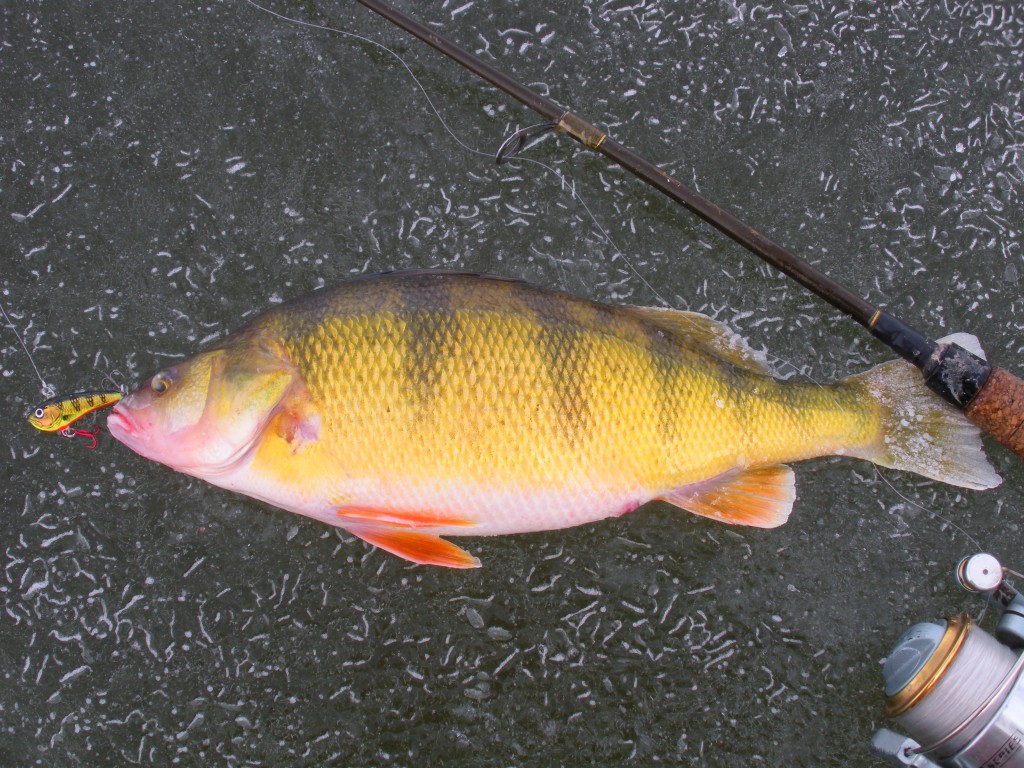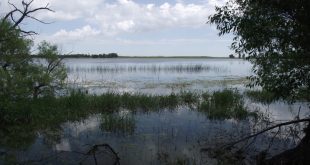I hate to keep hitting the same topic over and over again. I know I blogged about the Lake Yankton renovation a couple times in recent weeks (Lake Yankton Renovation , Lake Yankton Renovation, Postscript), but I want to tell you about another rotenone renovation that Nebraska fisheries biologists completed recently.
Late summer and early fall is definitely “renovation season”. Typically, water levels are lower at that time of year and less water means we need less rotenone to treat the volume of water. Less water also means we have a better chance of eliminating most, if not all, of the undesirable fish. This time of year is also good to do rotenone renovations because it is a little cooler, and it is before our field biologists start the bulk of their annual fish population sampling. The week before the Lake Yankton rotenone renovation, Rat & Beaver lakes in the middle of the Nebraska sandhills also had a complete rotenone renovation. Rat & Beaver are two interconnected lakes just south of the Valentine National Wildlife Refuge.
The reason for the Rat & Beaver renovation was the same as the Lake Yankton renovation–the fish community was dominated by less than desirable species like common carp and black bullhead. To put that in perspective, I want to blog about this topic again to share some numbers produced by a little extra research before, during and after the Rat & Beaver renovation. . . .
Nebraska’s sandhill lakes are very productive systems. They can produce a tremendous amount of aquatic vegetation and aquatic invertebrates (i.e. aquatic insects) and that can produce tremendous fisheries with lots of fast-growing and large fish. However, those sandhill lakes can also produce a tremendous amount of undesirable species of fish. As I have said before, ecosystems dominated by common carp tend to have poor water quality, poor habitat conditions and are a lot less favorable for sport fish. Sandhill lakes dominated by common carp are also a lot less productive for waterfowl. Water quality is relative, some waters naturally have cleaner and clearer water than others, but Rat & Beaver had clarity of about 9 inches and that was due mostly to the abundance of common carp. Common carp disturb bottom sediments with their feeding activity which means dirtier water and poorer habitat conditions.
How many common carp were there in Rat & Beaver? How about 390 tons worth, 291,000 adult carp. That works out to a whopping 607 carp per acre, 1,630 lbs./acre. That is a lot of carp, in fact, one of the highest densities of common carp ever recorded, anywhere.
Almost all of those common carp were 15-22 inches in length. Rat & Beaver have produced some really good yellow perch and black crappie fishing over the years, but in recent years it was pretty much almost entirely common carp. There were so many carp in Rat & Beaver that a person could go there and expect to even catch them through the ice!
 Common carp through the ice is a little unusual and yes, lots of fun, but most folks would much rather catch species like yellow perch and black crappies. Rat & Beaver’s fish community was dominated by common carp.
Common carp through the ice is a little unusual and yes, lots of fun, but most folks would much rather catch species like yellow perch and black crappies. Rat & Beaver’s fish community was dominated by common carp.
How dominant were the common carp? After the rotenone was applied, 62% of the fish found dead were common carp. Another 31% were black bullheads. At the time of the renovation, only 6% of the fish community was comprised of yellow perch and a grand total of only 30 black crappie were observed washed up on shorelines.
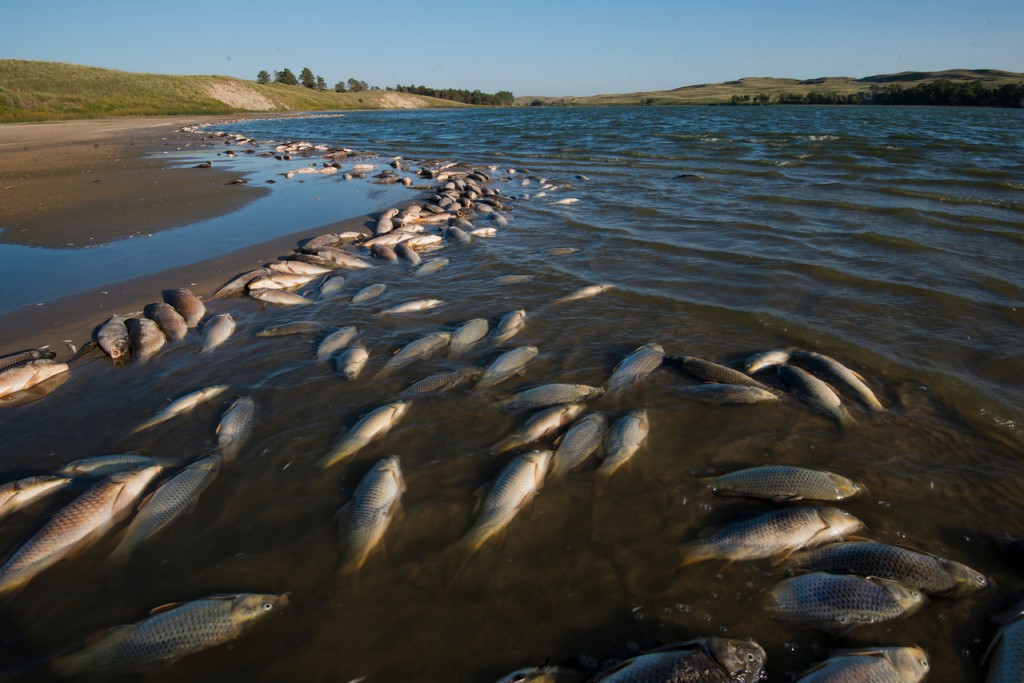
By weight, the Rat & Beaver fish biomass was 94% common carp, 5% black bullhead and less than 1% sport fish!
Again, it is amazing how dominant rough fish like common carp can be in a fish community and how detrimental that is to water quality, aquatic habitat and other species. Once again the Rat & Beaver ecosystem, fishery, and fishing will be much better in a few short years. I will bet that the water transparency is more than 9 inches right now.
Let me finish with a few more pictures of the Rat & Beaver renovation. Projects such as this are a major effort, but they are worth it!
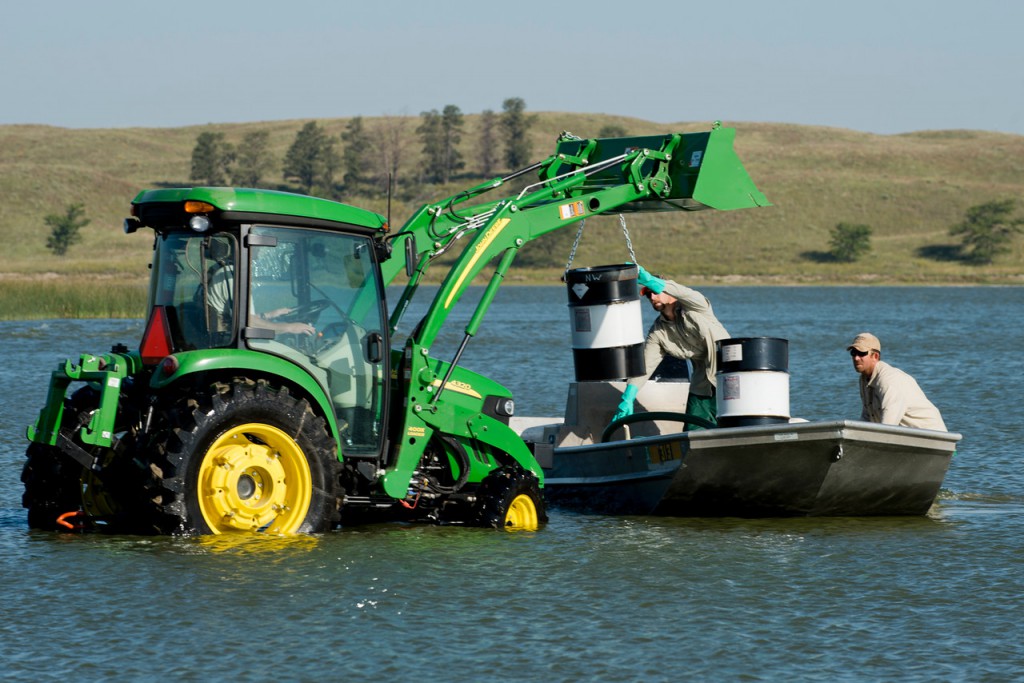
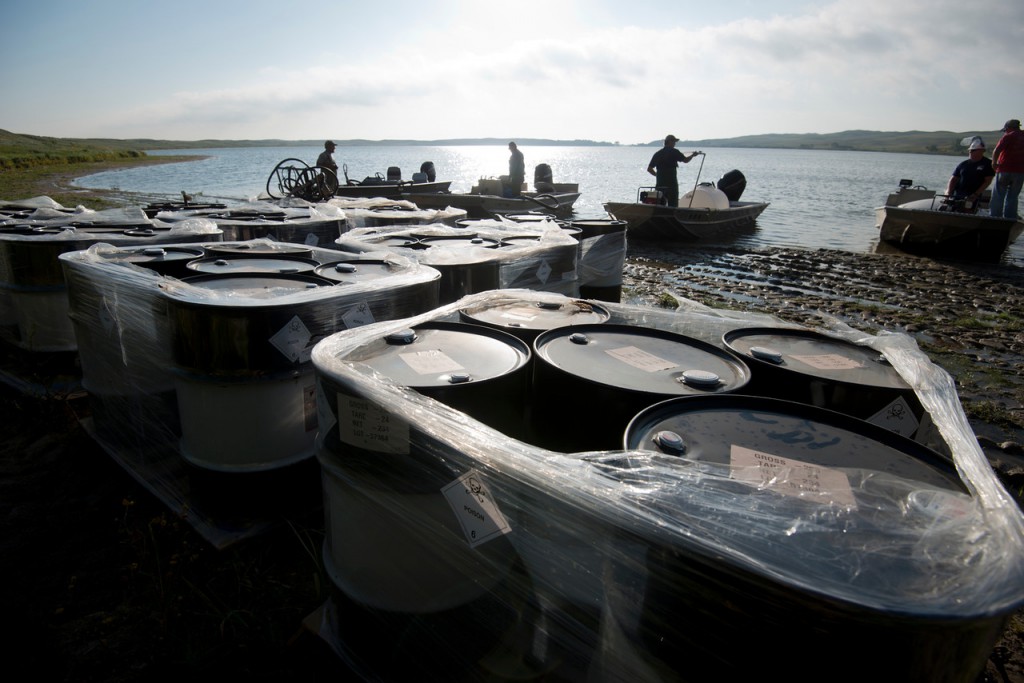
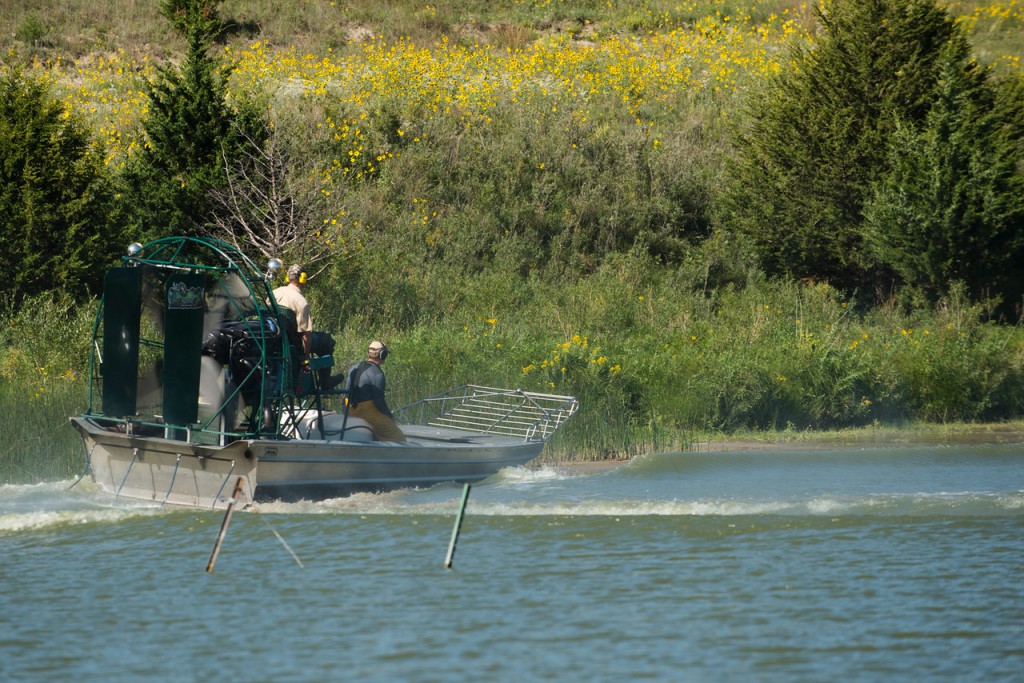
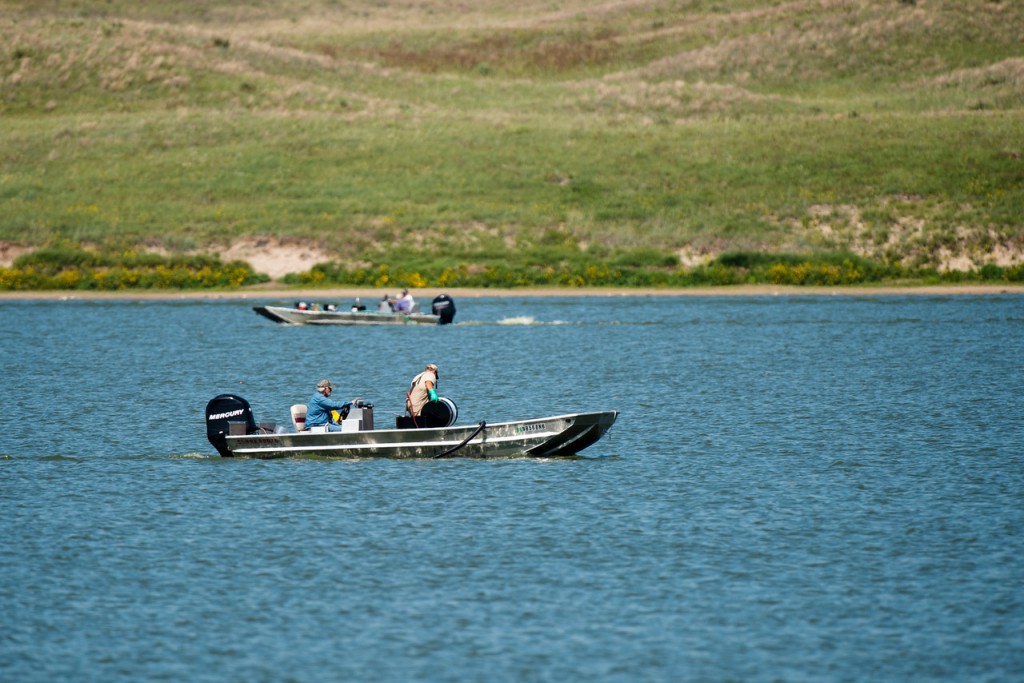
The future:
 Nebraskaland Magazine
Nebraskaland Magazine
